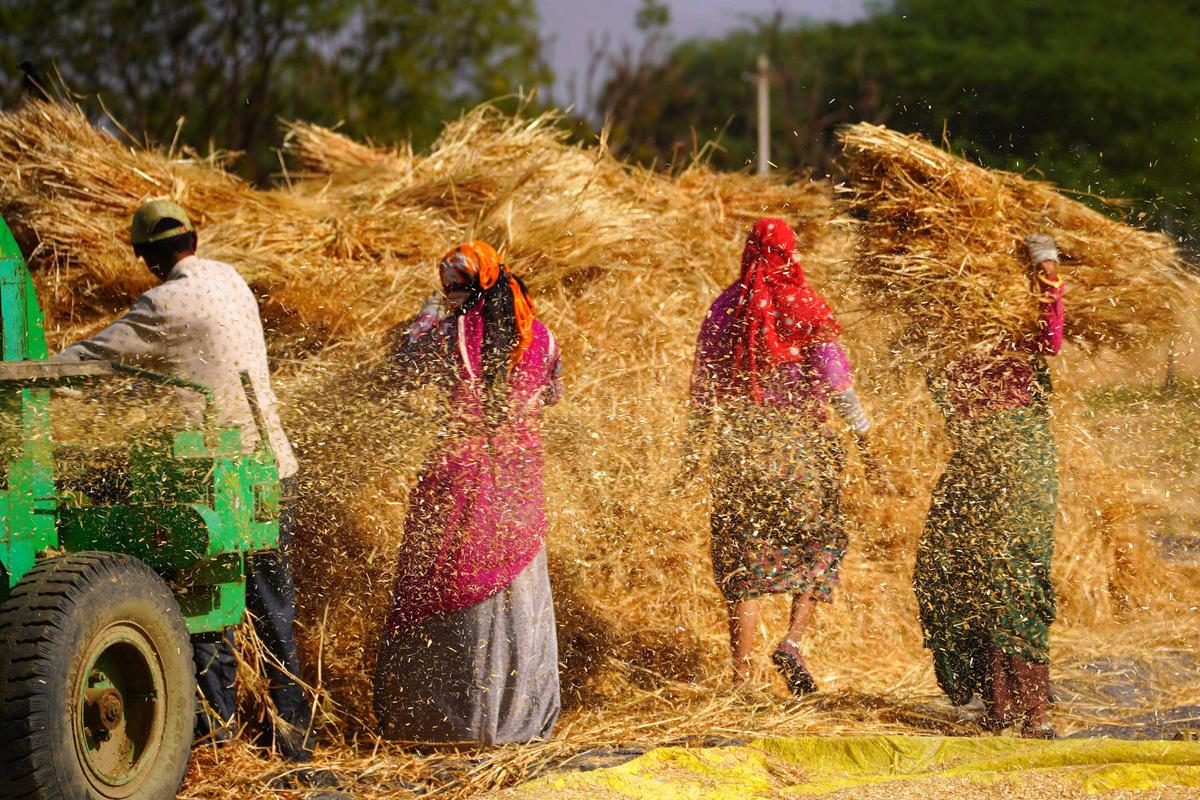Russia and Ukraine export approximately a quarter of all wheat in the world. However, due to Russia’s invasion of Ukraine and accompanying Western sanctions, their wheat supply has been substantially reduced. As a result, many countries that formerly relied solely on these two countries for wheat are now in desperate need of alternatives.
India, the world’s second-largest wheat producer after China, is said to be interested in filling the hole. To take advantage of the greater price of wheat on the international market, the government intends to authorize increased exports.
Activists for food security, on the other hand, stress the importance of prioritizing local prices and ensuring adequate supplies for home use before deciding on the scale of exports.
Exports are kept to a minimum
Between 2017 and 2021, Russia and Ukraine exported 183 and 91 million tonnes (MT) of wheat, respectively, while India exported a minuscule percentage of its output or only 12.6 MT. The European Union (157 MT), the United States (125 MT), Canada (112 MT), and Australia (112 MT) accounted for the majority of wheat exports during this time period (83 MT).
India, which had the second-largest wheat supply (including production, existing inventories, and imports) during this time period – 613 million tonnes — only exported 2% of it, with the remainder consumed domestically and stored. Other major exporters, on the other hand, may be able to sell large portions of their inventory. For example, over the 2017-2021 period, the United States exported 31% of its 404 MT supply. Australia exported 57 percent of its 146 MT supply, while Canada exported 60.5 percent of its 186 MT.
The world market
Many African, West Asian, and Southeast Asian countries are primarily reliant on Russian and Ukrainian wheat. Egypt, the world’s largest wheat importer, gets 93 percent of its wheat from its East European neighbors. Indonesia, the world’s second-largest importer, is 30 percent reliant on these two countries. Sudan (80 percent reliance), Tanzania (64 percent reliance), Libya (53 percent reliance), Tunisia (52 percent reliance), and West Asian countries such as Lebanon (77 percent reliance), Yemen (50 percent reliance), and the United Arab Emirates (42 percent reliance) are all highly reliant on supplies from the two neighbors at war.
Dr. Madhaiyaan Angamuthu, chairman of Apeda (Agricultural and Processed Food Products Export Development Authority), said that India is currently focusing on selling wheat to several of these countries. “Our target markets include Egypt, Turkey, Nigeria, Algeria, the Middle East, Indonesia, Vietnam, Sri Lanka, Bangladesh, Thailand, the Philippines, Morocco, and Tanzania,” he said.
“APEDA has constituted a task force to lend impetus to wheat export promotion as well as to bring focus on the issues and bottlenecks faced in production and export,” Dr. Angamuthu stated.
Food security activists agree that India is well-positioned to step in and fill the hole, with its wheat harvesting season (March to May) coinciding with the supply shortfall, a big crop forecast again this year, and a considerable quantity of buffer stockpiles. They stressed, however, that India should not lose sight of its internal requirements while exporting excess wheat.
Domestic requirements
The Indian government should prioritize price stability and grain supply for internal consumption, while also ensuring that farmers are appropriately compensated, according to Dipa Sinha, an assistant professor at Delhi’s Ambedkar University’s School of Liberal Studies.
“The government’s top goal should be to meet the food security needs of all Indians,” said Dr. Sinha, who was involved in the Right to Food movement. “This will necessitate maintaining the PDS, Pradhan Mantri Garib Kalyan Anna Yojana (PMGKAY), as well as broadening the net to include more individuals who are currently excluded.” This is particularly necessary for light of the fact that market prices are likely to rise further. On the other hand, now that greater prices are available, the government should explore purchasing wheat from Indian farmers for these food security needs at a lower price than the present MSP,” she added.
“The government should arrange this step such that it has no negative impact on domestic consumption.” Wheat is predicted to produce a bumper crop, allowing the government to meet its distribution and buffer needs. Furthermore, because there are now no export limitations, farmers can benefit from increased prices by selling surplus crops to private traders for export,” Dr. Sinha explained.
The sensitive subject of wheat export from FCI reserves adds to the complexity of the situation. Some industrialized nations may raise complaints at the World Trade Organization if India decides to sell wheat from its inventories, according to a trade expert who spoke on the condition of anonymity. India has already been accused of exporting grains from its stocks in March. India responded that its rice exports did not come from supplies held in reserve under public stockholding programs.
Increasing agricultural revenue
Biraj Patnaik, the former Principal Adviser to the Commissioners of the Indian Supreme Court on the Right to Food issue, pointed out that the WTO’s Bali Ministerial in 2014 included a peace clause that does not preclude India from exporting food grains.
“With the buffer supplies in hand, India should expand its wheat exports to the degree possible to stabilize world prices,” Mr. Patnaik said. “It’s also significant because countries that formerly relied on Russia and Ukraine for wheat are exploring alternatives.” “The government should take advantage of this chance by purchasing all of the wheat cultivated in M.S.P., which would benefit Indian farmers,” he added.
He emphasized, however, that exports should not come at the expense of domestic consumption, especially with the recent extension of the PMGKAY program.


